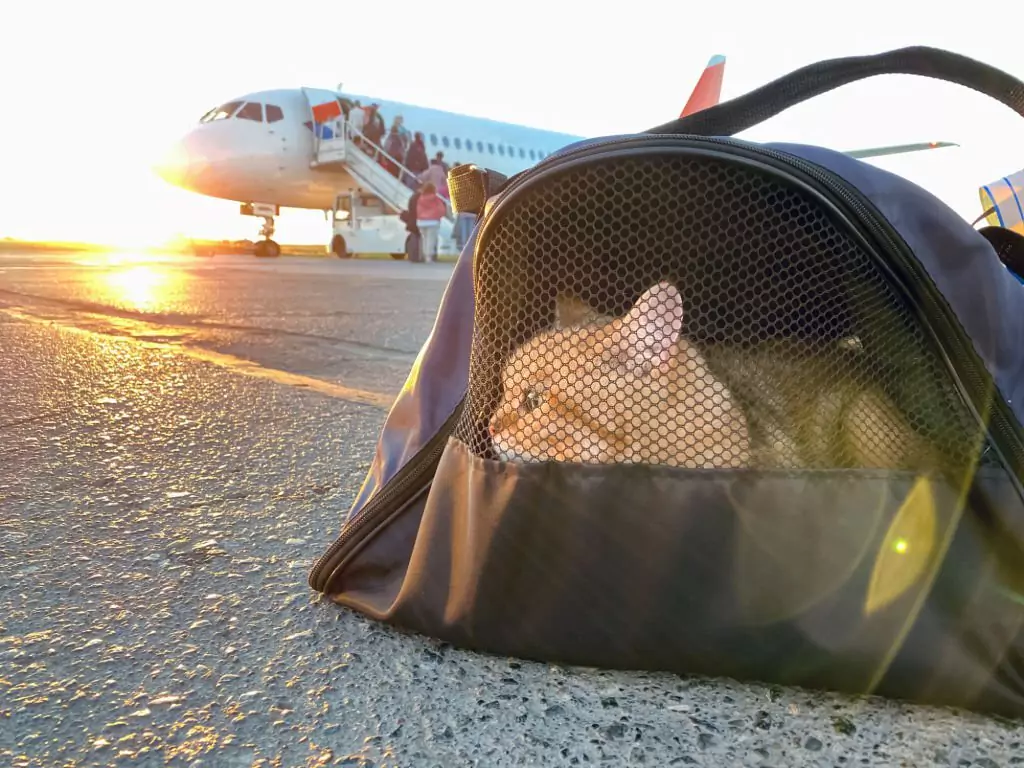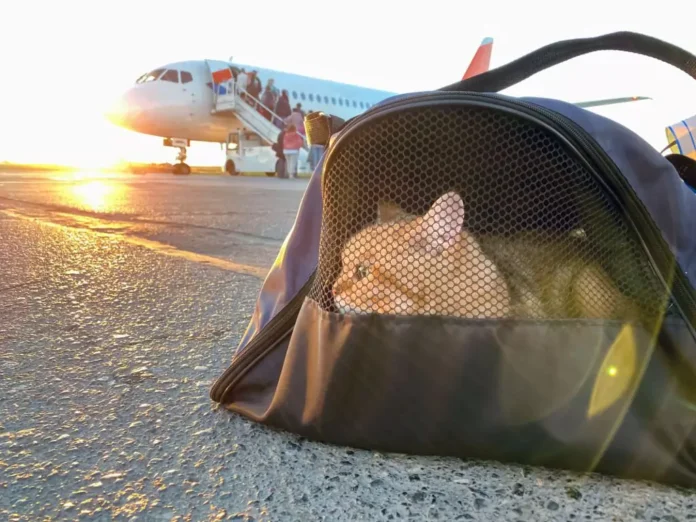Introduction
Traveling with cats on a plane can be a challenging experience for both you and your furry friends. Cats are known for their independent nature and can become easily stressed in unfamiliar environments. However, with proper preparation and planning, you can ensure a smooth and comfortable journey for your cats. In this article, we will discuss the steps you need to take to prepare for air travel with your cats, including choosing the right carrier, getting your cats used to their carriers, packing for the flight, navigating airport security, boarding the plane, providing in-flight care, and arriving at your destination.

Preparing for Air Travel with Cats
Before embarking on your journey, it is important to check the policies and requirements of the airline you will be flying with. Each airline has its own rules and regulations regarding traveling with pets, so make sure you are familiar with them. Some airlines may require specific documentation or health certificates for your cats, so it is important to be prepared.
It is also crucial to schedule a visit with your veterinarian before the flight to ensure that your cats are healthy enough to fly. Your veterinarian can perform a thorough examination and provide any necessary vaccinations or medications. They can also offer advice on how to keep your cats calm and comfortable during the journey.
Consider your cats’ temperament and behavior during travel. Some cats may be more anxious or prone to motion sickness than others. If you know that your cats do not handle travel well, it may be worth discussing options with your veterinarian, such as sedatives or anti-anxiety medications.
Choosing the Right Carrier for Your Cats
Choosing the right carrier for your cats is essential for their comfort and safety during the flight. There are various types of carriers available, including soft-sided carriers, hard-sided carriers, and airline-approved carriers.
Soft-sided carriers are lightweight and easy to carry, making them a popular choice for air travel. They also provide a more comfortable and cozy environment for your cats. Hard-sided carriers, on the other hand, offer more protection and durability. They are also easier to clean and maintain.
When choosing a carrier, make sure it is airline-approved and appropriate for your cats’ size and needs. The carrier should be well-ventilated, secure, and have enough space for your cats to stand, turn around, and lie down comfortably. It should also have a leak-proof bottom and a secure latch or zipper.
Getting Your Cats Used to Their Carriers
Getting your cats used to their carriers before the flight is crucial to reduce stress and anxiety. Start by leaving the carrier out in your home with the door open so that your cats can explore it at their own pace. Place treats, toys, or familiar bedding inside the carrier to make it a positive and inviting space for your cats.
Gradually increase the amount of time your cats spend in the carrier, starting with short periods and gradually extending the duration. Reward your cats with treats or praise when they enter or stay in the carrier voluntarily. This will help them associate the carrier with positive experiences.
You can also use pheromone sprays or calming aids to help relax your cats during the acclimation process. These products mimic the natural pheromones that cats release when they feel safe and secure. They can help reduce anxiety and promote a sense of calmness in your cats.
Packing for Your Cats’ Flight
When packing for your cats’ flight, it is important to include all the essential items they will need during the journey. This includes food, water, medication, litter, and any comfort items that will help them feel secure.
Pack enough food and water for the duration of the flight, as well as a few extra servings in case of delays. Use spill-proof bowls or containers to prevent any messes during the flight. If your cats are on any medication, make sure to pack an adequate supply and any necessary administration tools.
Bring a small bag of litter and a disposable litter tray for your cats to use during the flight. This will help them feel more comfortable and reduce the risk of accidents. Pack a few familiar toys or blankets to provide a sense of familiarity and comfort for your cats.
When packing, try to be as efficient as possible to minimize stress for your cats. Keep all the necessary items organized and easily accessible. It may also be helpful to label the carrier with your contact information in case it gets misplaced.
Navigating Airport Security with Cats
Going through airport security with your cats can be a daunting task, but with some preparation, it can be a smooth process. Before going through security, remove your cats from their carriers and carry them through the metal detector while holding them securely. The carrier will need to go through the X-ray machine separately.
Inform the security personnel that you are traveling with cats and ask for any specific instructions or guidelines. They may ask you to remove your cats’ collars or harnesses before going through the metal detector. Follow their instructions and remain calm and cooperative throughout the process.
If your cats are particularly anxious or skittish, you may consider using a harness or leash to keep them secure during the security check. This will prevent them from escaping or getting lost in the busy airport environment.
Boarding the Plane with Your Cats
When it is time to board the plane, make sure your cats are securely inside their carriers. Keep them close to you and avoid placing them on the floor or in overhead compartments. Follow the instructions of the flight attendants and be mindful of other passengers.
If possible, choose a seat near the window or away from high-traffic areas to minimize disturbances for your cats. Keep the carrier under the seat in front of you and ensure that it is properly secured. Avoid opening the carrier during the flight, as this can increase the risk of your cats escaping or becoming stressed.
In-Flight Care for Your Cats
During the flight, it is important to provide proper care and attention to your cats. Keep an eye on them and monitor their behavior for any signs of distress or discomfort. Offer them water and food if necessary, but be mindful of any turbulence or restrictions imposed by the airline.
If your cats become anxious or agitated during the flight, try to comfort them by speaking softly and offering gentle strokes. Avoid opening the carrier or removing them from it unless absolutely necessary. The cabin environment can be overwhelming for cats, so it is important to provide a sense of security and stability.
Arriving at Your Destination with Your Cats
Upon arrival at your destination, follow the procedures outlined by the airline for retrieving your cats and their carriers. Be patient and allow other passengers to disembark first before retrieving your belongings. Once you have collected your cats, take them to a quiet and secure area where they can relax and adjust to their new surroundings.
Help your cats settle into their new environment by providing familiar items, such as their bedding or toys. Offer them food, water, and a clean litter tray to help them feel more comfortable. Give them time to explore and adjust at their own pace, and be patient if they seem hesitant or anxious.
Conclusion
Traveling with cats on a plane can be a challenging experience, but with proper preparation and planning, it can be a successful and stress-free journey. Remember to check airline policies, schedule a visit with your veterinarian, choose the right carrier, get your cats used to their carriers, pack efficiently, navigate airport security, board the plane safely, provide in-flight care, and help your cats adjust to their new surroundings. With patience, care, and attention, you can ensure a comfortable and enjoyable trip for both you and your feline companions.


